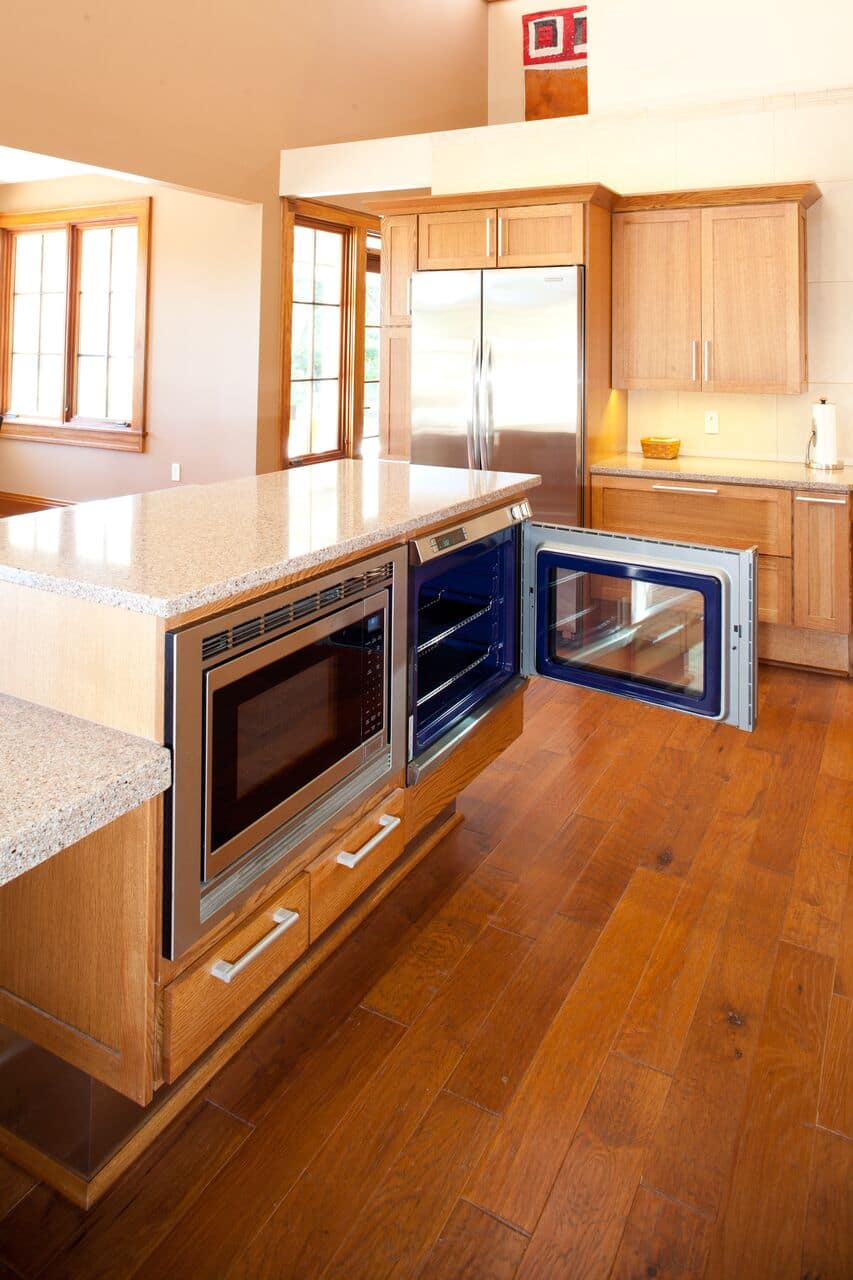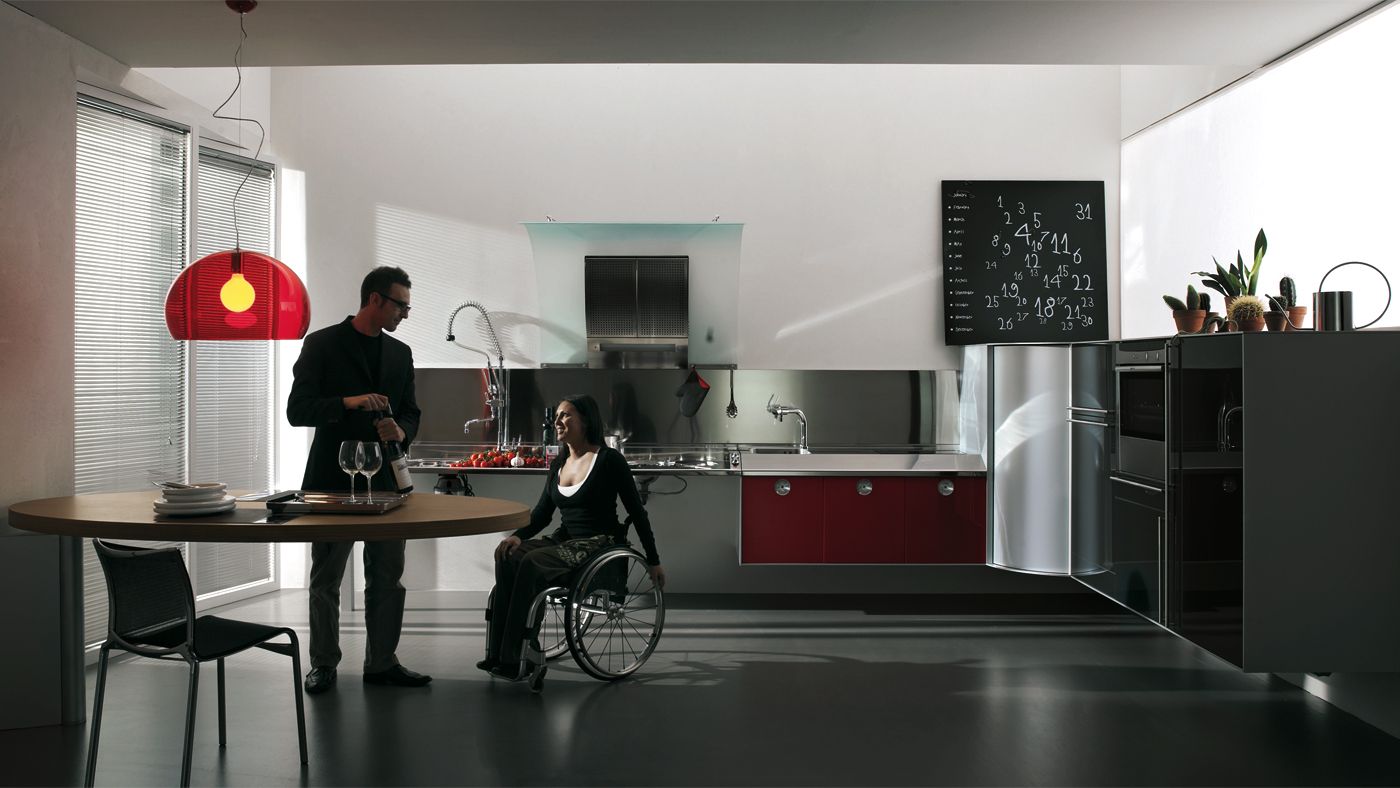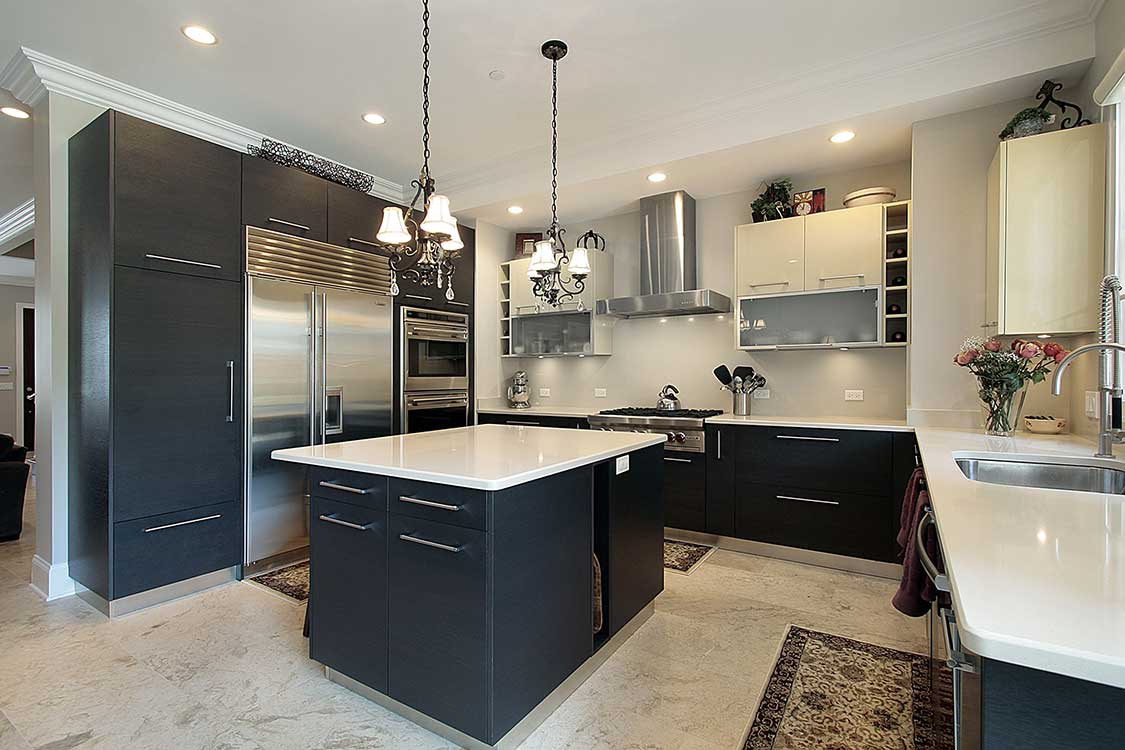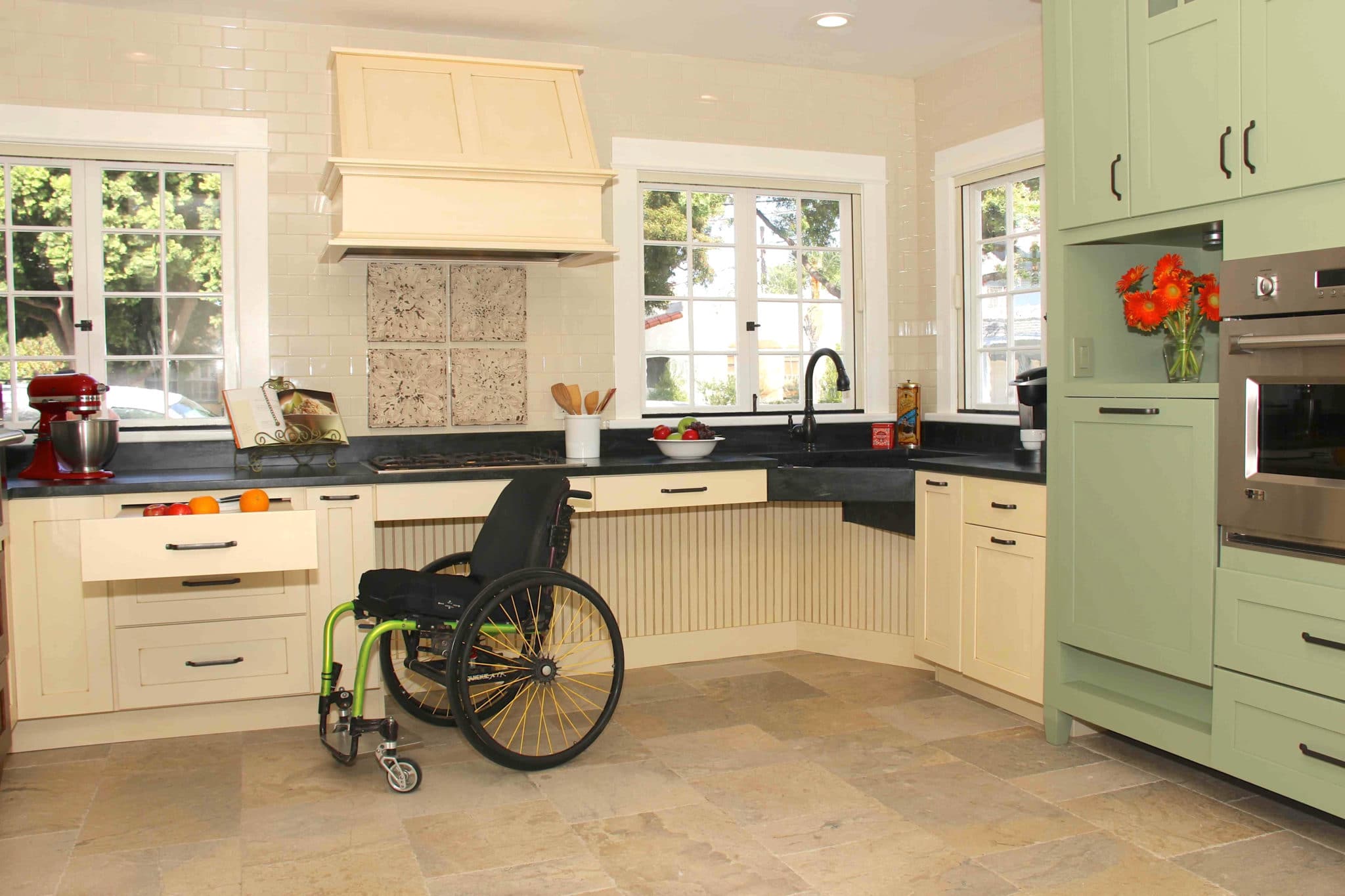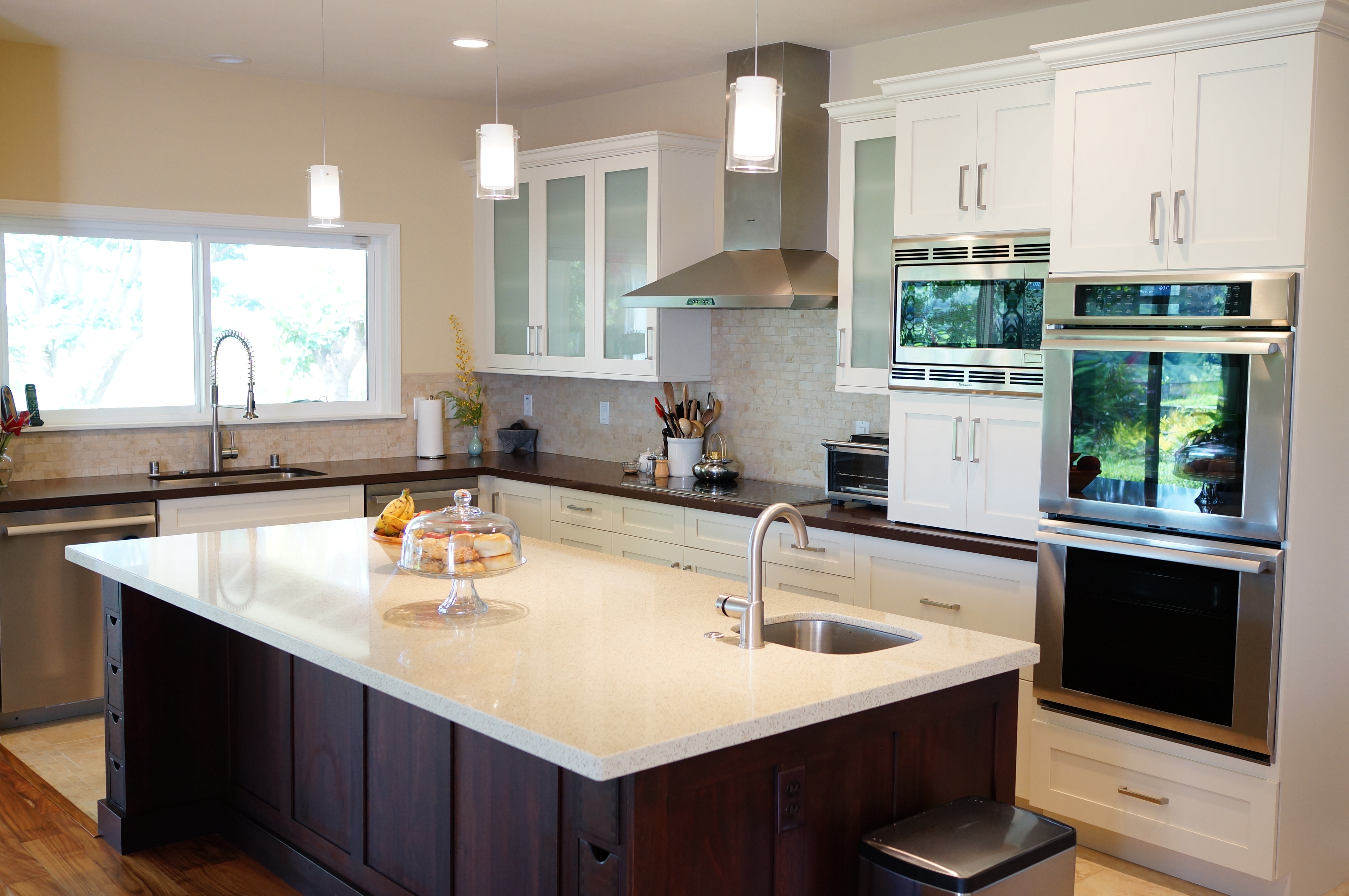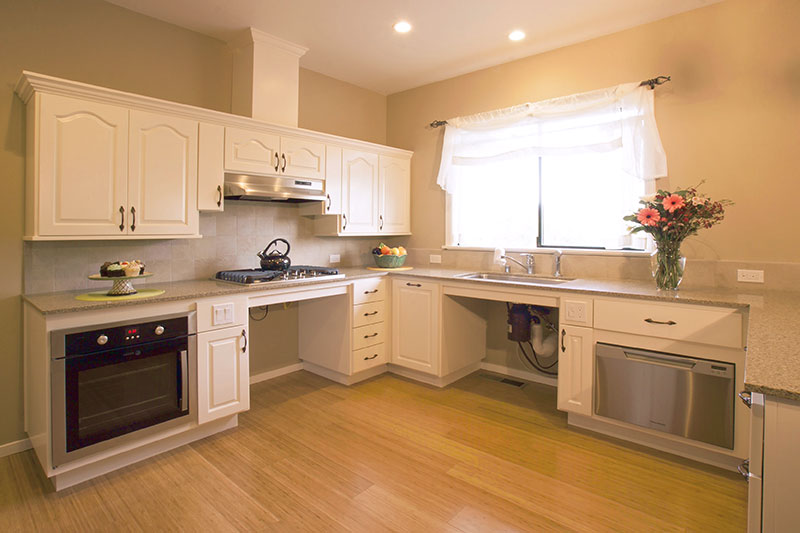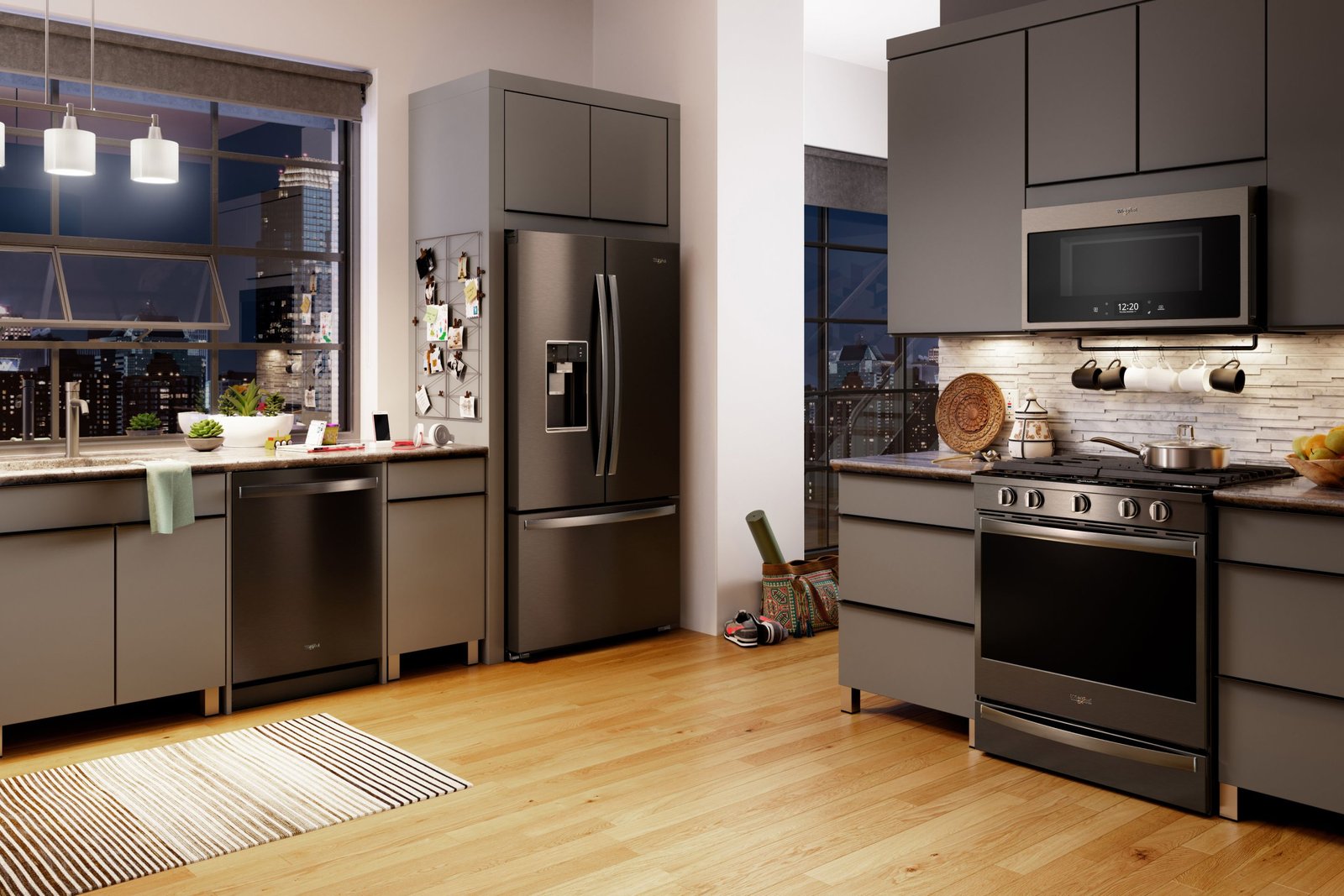A kitchen is the heart of any home, and it should be a space that is not only functional but also accessible for everyone. This is where universal design features come in. These features are designed to make the kitchen space more inclusive and user-friendly for people of all ages and abilities. Here are the top 10 universal design features that can make your kitchen more accessible and efficient.Universal Design Features for Kitchens
1. Open Layout: An open layout is a key feature of universal kitchen design. It allows for easy movement and access for people with mobility aids such as wheelchairs or walkers. An open kitchen also makes it easier for multiple people to use the space at the same time. 2. Adjustable Countertops: Countertops that can be raised or lowered are a great addition for wheelchair users or those with varying heights. This feature allows for a comfortable working space for all individuals. 3. Touchless Faucets: Installing touchless faucets in the kitchen can make it easier for people with limited hand mobility to use the sink. This feature also promotes hygiene by eliminating the need to touch the faucet handles with dirty hands. 4. Ample Lighting: Adequate lighting is essential for a functional kitchen, especially for those with vision impairments. Installing task lighting under cabinets and bright overhead lights can make it easier for everyone to see and work in the kitchen. 5. Easy-to-Reach Storage: Lowering the height of upper cabinets and installing pull-out shelves can make it easier for people with limited reach to access items in the kitchen. This feature can also benefit those in wheelchairs or with mobility aids. 6. Wide Doorways: Wide doorways are a must for a universally designed kitchen. They allow for easy entry and exit for people with mobility aids and make it easier for multiple people to move around the space simultaneously. 7. Non-Slip Flooring: Slippery floors can be hazardous for anyone, but they can be especially dangerous for older adults or those with mobility impairments. Installing non-slip flooring in the kitchen can reduce the risk of falls and make the space more accessible for all. 8. Multi-Height Countertops: Having countertops at different heights can allow for easier use of the kitchen by individuals of varying heights. This feature can also be useful for those who prefer to sit while working in the kitchen. 9. Accessible Appliances: Appliances with user-friendly features, such as side-opening ovens and front-loading dishwashers, can make them easier to use for people with limited reach or mobility. 10. Color Contrast: Incorporating color contrast in the kitchen can make it easier for individuals with vision impairments to navigate the space. Using different colors for cabinets, countertops, and appliances can help distinguish them from one another.10 Universal Design Features for Kitchens
When it comes to kitchen design for accessibility, it's all about creating a space that is functional and easy to use for people of all abilities. The above-mentioned universal design features can make a significant difference in making the kitchen more accessible. However, it's essential to keep in mind the specific needs of the individuals who will be using the space.Kitchen Design for Accessibility
If you're looking for accessible kitchen design ideas, here are a few to consider: - Lowered Countertops: Lowering the height of countertops can make them more accessible for wheelchair users or those with limited reach. - Pull-Out Shelves: Installing pull-out shelves in lower cabinets can make it easier to access items without having to reach or bend down. - Lever Handles: Replacing traditional doorknobs and faucet handles with lever handles can make them easier to use for individuals with limited hand mobility. - Slide-Out Cutting Boards: Adding slide-out cutting boards to countertops can provide a more convenient workspace for individuals who prefer to sit while working. - Walk-In Pantry: A walk-in pantry with ample space can make it easier to store and access food items, especially for those with mobility aids.Accessible Kitchen Design Ideas
Inclusive kitchen design is all about creating a space that is welcoming and functional for everyone. By incorporating universal design features, you can make your kitchen more inclusive and user-friendly for people of all ages and abilities.Inclusive Kitchen Design
There is no one-size-fits-all approach when it comes to universal kitchen layouts. The key is to consider the specific needs of the individuals who will be using the space and design a layout that works for them. However, some common features of universal kitchen layouts include wide doorways, open space, and easy-to-reach storage.Universal Kitchen Layouts
Adaptive kitchen features are designed to make the space more functional and accessible for individuals with specific needs. These features can include specialized appliances, adjustable countertops, and pull-out shelves.Adaptive Kitchen Features
Accessible kitchen cabinets are an essential part of a universally designed kitchen. Lowering the height of upper cabinets and installing pull-out shelves can make them more accessible for individuals with limited reach or mobility aids.Accessible Kitchen Cabinets
When it comes to universal kitchen appliances, look for features such as side-opening ovens, front-loading dishwashers, and user-friendly controls. These features can make appliances easier to use for people with limited reach or mobility.Universal Kitchen Appliances
A barrier-free kitchen design is one that eliminates physical barriers and allows for easy movement and access for individuals with mobility aids. This can include features such as an open layout, wide doorways, and non-slip flooring. In conclusion, incorporating universal design features in your kitchen can make it more accessible, functional, and inclusive for everyone. Consider the specific needs of the individuals using the space, and don't be afraid to get creative with your design. With these top 10 universal design features, you can create a kitchen that is truly a heart of the home for everyone.Barrier-Free Kitchen Design
Universal Design in the Kitchen: Creating a Functional Space for All

The Importance of Universal Design in Kitchen Spaces
 When it comes to designing a kitchen, functionality and accessibility should be top priorities. This is where universal design comes in – a concept that focuses on creating spaces that are accessible and usable for people of all ages, abilities, and sizes. In the kitchen, this means incorporating features and design elements that make it easier for everyone to use, regardless of their physical limitations.
By incorporating universal design features into your kitchen, you can create a functional and inclusive space that not only looks great, but also meets the needs of all users.
When it comes to designing a kitchen, functionality and accessibility should be top priorities. This is where universal design comes in – a concept that focuses on creating spaces that are accessible and usable for people of all ages, abilities, and sizes. In the kitchen, this means incorporating features and design elements that make it easier for everyone to use, regardless of their physical limitations.
By incorporating universal design features into your kitchen, you can create a functional and inclusive space that not only looks great, but also meets the needs of all users.
Key Features of Universal Design in the Kitchen
 So, what exactly are some universal design features that can be incorporated into your kitchen? Here are a few key elements to consider:
1. Wide Doorways and Open Spaces:
One of the main principles of universal design is creating spaces that are easy to navigate and maneuver in, regardless of physical limitations. This means having wide doorways and open spaces in the kitchen to accommodate wheelchairs, walkers, and other mobility aids.
2. Multiple Countertop Heights:
Different users have different needs when it comes to countertop heights. By incorporating multiple countertop heights in your kitchen, you can ensure that everyone can comfortably use the space. This also allows for flexibility in the kitchen, whether it's for standing or seated tasks.
3. Durable and Non-Slip Flooring:
Slippery floors can be hazardous for anyone, but especially for those with mobility issues. Choosing durable and non-slip flooring options, such as cork or textured tile, can make the kitchen safer for all users.
4. Easy-to-Reach Storage:
Traditional kitchen cabinets can be difficult for some people to access, especially those in wheelchairs. Consider incorporating pull-out shelves, lazy susans, and other storage solutions that are easy to reach for everyone.
5. Task Lighting:
Good lighting is essential in any kitchen, but it's especially important for those with visual impairments or aging eyes. Incorporating task lighting, such as under-cabinet lights, can make it easier for everyone to see and perform tasks in the kitchen.
So, what exactly are some universal design features that can be incorporated into your kitchen? Here are a few key elements to consider:
1. Wide Doorways and Open Spaces:
One of the main principles of universal design is creating spaces that are easy to navigate and maneuver in, regardless of physical limitations. This means having wide doorways and open spaces in the kitchen to accommodate wheelchairs, walkers, and other mobility aids.
2. Multiple Countertop Heights:
Different users have different needs when it comes to countertop heights. By incorporating multiple countertop heights in your kitchen, you can ensure that everyone can comfortably use the space. This also allows for flexibility in the kitchen, whether it's for standing or seated tasks.
3. Durable and Non-Slip Flooring:
Slippery floors can be hazardous for anyone, but especially for those with mobility issues. Choosing durable and non-slip flooring options, such as cork or textured tile, can make the kitchen safer for all users.
4. Easy-to-Reach Storage:
Traditional kitchen cabinets can be difficult for some people to access, especially those in wheelchairs. Consider incorporating pull-out shelves, lazy susans, and other storage solutions that are easy to reach for everyone.
5. Task Lighting:
Good lighting is essential in any kitchen, but it's especially important for those with visual impairments or aging eyes. Incorporating task lighting, such as under-cabinet lights, can make it easier for everyone to see and perform tasks in the kitchen.
The Benefits of Universal Design in the Kitchen
 Universal design in the kitchen not only creates a more inclusive space, but it also offers a variety of other benefits. By incorporating these features, you can increase the resale value of your home, as well as make it easier for aging homeowners to stay in their homes longer. Additionally, a universally designed kitchen can also make cooking and other kitchen tasks more efficient for all users.
Incorporating universal design features into your kitchen may require some extra planning and investment upfront, but the long-term benefits far outweigh the initial costs. By creating a space that is accessible and functional for all, you can ensure that your kitchen is the heart of your home for years to come.
Universal design in the kitchen not only creates a more inclusive space, but it also offers a variety of other benefits. By incorporating these features, you can increase the resale value of your home, as well as make it easier for aging homeowners to stay in their homes longer. Additionally, a universally designed kitchen can also make cooking and other kitchen tasks more efficient for all users.
Incorporating universal design features into your kitchen may require some extra planning and investment upfront, but the long-term benefits far outweigh the initial costs. By creating a space that is accessible and functional for all, you can ensure that your kitchen is the heart of your home for years to come.

